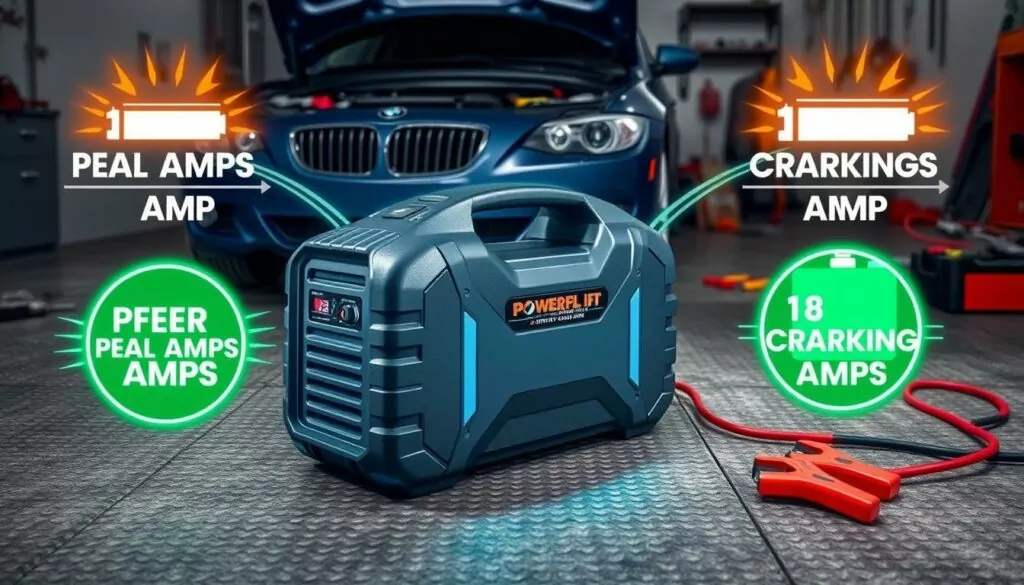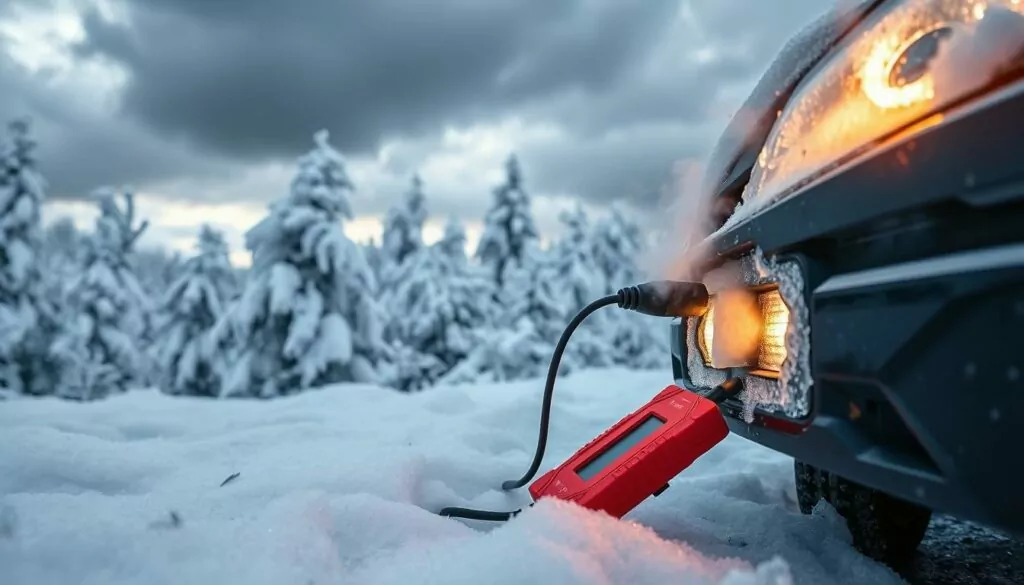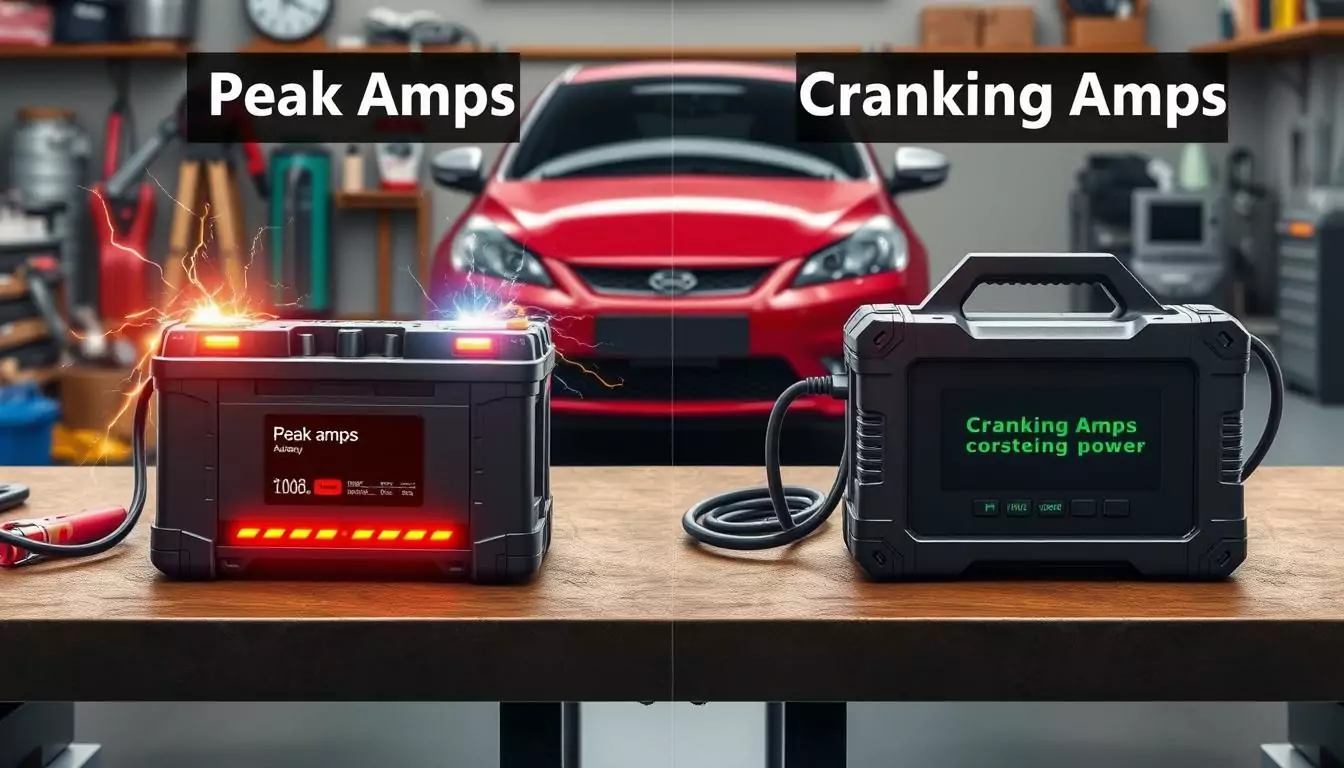Ever been stuck with a dead car battery, staring at a jump starter that just won’t do the trick? You’re not alone—I’ve been there too. It’s frustrating, but here’s the good news: figuring out jump starter ratings can save the day. We’re talking peak amps, cranking amps, and more—numbers that sound fancy but are actually your key to picking the right tool in 2025. Let’s dive in and break it down so you’re never left stranded again!
What Are Jump Starter Ratings, Anyway?
Okay, so jump starter ratings might seem like techy mumbo-jumbo, but they’re simpler than you think. These numbers tell you how much power a jump starter can blast into your dead battery to bring it back to life. When I first shopped for one, I had no clue what peak amps or cranking amps meant. Spoiler: they’re not the same, and knowing the difference can keep you from calling a tow truck.
Whether you’re a car geek or just someone who drives to work, these ratings matter. With jump starters getting smarter and stronger in 2025, now’s the time to get the scoop on what’s what.
Peak Amps: The Quick Power Punch
So, what’s up with peak amps? Picture this: your battery’s toast, and you need a fast, hard hit of power to kick the engine into gear. That’s peak amps in action—an instant burst, like a sprinter bolting off the line. They range from 400 to a massive 4000 amps, depending on the jump starter.
Why should you care? Bigger engines—like in trucks—or brutal cold weather need that extra oomph to get going. I’ve seen a high-peak-amp model turn a freezing morning from a nightmare into a quick fix.

Cranking Amps: The Reliable Long Haul
Now, cranking amps (CA) are more like the steady friend who sticks around. Tested at 32°F for 30 seconds, they show how much power a jump starter can keep pumping to turn your engine over. Most cars need 400-600 CA to start on a regular day—super handy info for everyday life.
I learned this lesson when my old jump starter had killer peak amps but fizzled out too fast to start my sedan. Cranking amps give you the real deal on how it’ll perform when you’re in a pinch.
Why Peak Amps Pack a Punch
Peak amps aren’t just a cool number—they’re a big deal for jump starting safety and actually getting your car running. They’re the muscle that gives your battery that wake-up call. For a small sedan, 400-600 peak amps might cut it, but if you’ve got an SUV or truck, you’ll want 700-1000+ to roll.
In freezing weather or with a totally drained battery, high peak amps can be your hero. Ever tried firing up a diesel engine in January? You’ll thank those extra amps, trust me.
When You Need That Extra Boost
- Big engines (like 5.0-liter or larger)
- Batteries that are completely dead
- Freezing cold that makes oil thick as molasses
- Heavy-duty rigs needing 1000+ amps
A buddy swears by his CAROSS T14—it’s got monster peak amps and even an air compressor. Pretty sweet for those “middle of nowhere” moments, right?
Cranking Amps: Your Winter Wingman
Winter can be brutal on batteries—cold thickens oil and drains power fast. That’s where cold cranking amps (CCA) step up, tested at 0°F for 30 seconds. They’re your go-to for making sure your jump starter can handle icy mornings. I’ve watched batteries lose half their juice in those temps—yikes!
For small cars, 200-300 CCA might do, but SUVs or snowy climates need 400-600 or more. A mechanic once told me, “In winter, 400 CCA or higher is your best bet.” He was spot on.

Peak Amps vs. Cranking Amps: The Showdown
Here’s the lowdown: peak amps are the loud, flashy stat companies love to brag about, but cranking amps—especially CCA—are the quiet champs that keep things running. Peak amps hit fast; cranking amps hang in there. For most of us, CA or CCA tell you what a jump starter’s really made of.
Check this out:
| Measurement | Duration | Temp | Best For |
|---|---|---|---|
| Peak Amps | Instant | Any | Emergency kick |
| Cranking Amps (CA) | 30 sec | 32°F | Mild days |
| Cold Cranking Amps (CCA) | 30 sec | 0°F | Winter struggles |
So, which wins? Depends on your car and where you live—hang tight for more on that!
How to Choose the Best Jump Starter in 2025
Picking a jump starter doesn’t have to be a headache. It’s all about matching it to your ride—think engine size, weather, and battery type. I once snagged a cheapo model with huge peak amps, only to watch it flop in a snowstorm. Lesson learned: know your needs.
Here’s what to look at:
- Engine size: Bigger engines need more power.
- Weather: Cold places call for higher CCA.
- Battery capacity: Check compatibility.
- Extras: USB ports or a flashlight can save the day.
For a midsize car, 300-400 CCA usually works; SUVs might need 400-600. Pro tip: go for peak amps double the CCA for some wiggle room.

Keep Your Jump Starter Ready to Roll
A jump starter’s useless if it’s dead when you need it—I’ve learned that the hard way. Give it some love with regular checks. I peek at mine monthly, testing the charge and cables. Keeps the surprises away.
Store it somewhere cool and dry—not your scorching trunk—and recharge it every three months if it’s just sitting there. Lithium-ion ones don’t like freezing while charging, so heads up on that.
Safety First: Jump Starting the Right Way
Jump starting safety isn’t optional—it’s everything. One slip, like crossing cables, and you’re in for a jolt. Wear safety glasses, stick to the manual, and keep those clamps apart. Models with reverse polarity protection? They’re gold.
My trick? I triple-check before I start. Better safe than zapped, you know?
What’s Next for Jump Starters in 2025
Jump starters are leveling up fast. Lithium-ion tech’s making them lighter and tougher—some, like Green Keeper’s latest, hit 2000 peak amps and toss in extras like air compressors. Imagine starting your car and fixing a flat. How awesome is that?
With battery capacities up to 20,000 mAh and goodies like USB charging, these are must-haves for road trips. What’s coming? Maybe smart jump starters that ping your phone—2025’s gonna be wild!
FAQs: Jump Starter Basics You Need to Know
How many cranking amps do I need?
Most cars want 400-600 CCA. Bigger engines or diesels might need more—flip open your manual to double-check.
Are higher peak amps always better?
Not quite. They’re great for heavy-duty starts, but cranking amps are king for daily use. It’s all about balance.
What’s the deal with cold cranking amps?
CCA’s your cold-weather buddy—tested at 0°F, it shows how your jump starter holds up in snow. Crucial if you’re in a frosty zone.
Can too many amps hurt my car?
Nope! A higher-amp jump starter just gives what’s needed—no frying involved. Just don’t splurge on power you won’t use.
How often should I charge it?
After every use, and every three months if it’s chilling. Keeps it ready when you’re in a jam.
